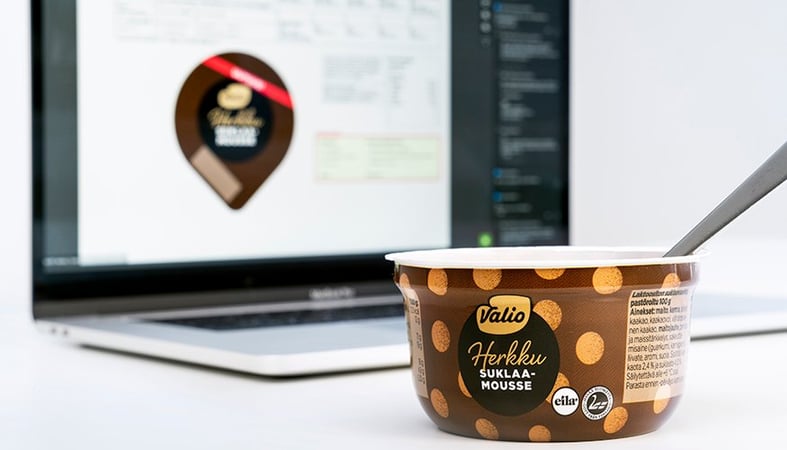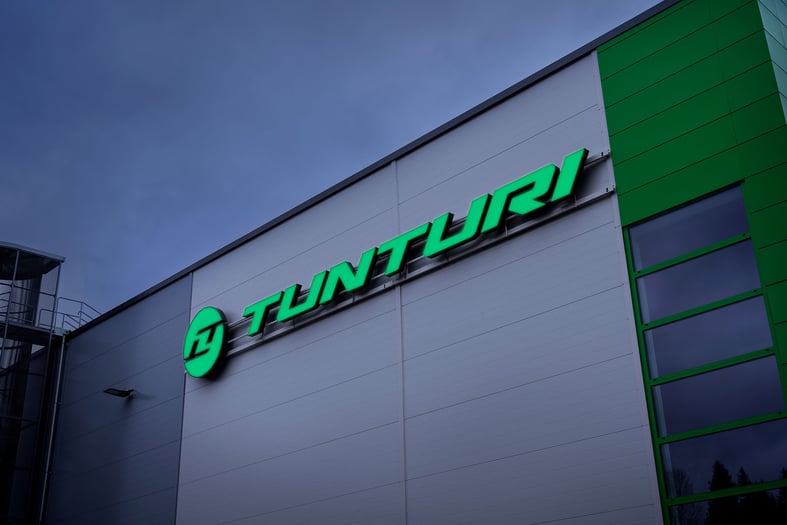References - Grano — 29.03.2021 — min read time
Valio and their stakeholders use Grano’s EMMi Digital Asset Management

At Valio, you won’t find people sending proofs and emails back and forth. This is because Valio’s asset management has been entirely centralised to Grano’s EMMi Digital Asset Management service, project management included. As a result, things like the design and asset production process of the company’s packaging production are all carried out in one place.
Valio has been using Grano's EMMi Digital Asset Management for over 10 years now. The company initially used EMMi solely as an asset management service and media bank, but nowadays the service is also used for project management thanks to an add-on designed specifically for this purpose. EMMi serves as a shared worktop for Valio employees and their interest groups.
Nowadays, it is essential for a company’s digital assets to be accessible regardless of where in Finland or the world the persons working on them might currently be. However, in many companies this kind of access is not a given. In fact, many companies still transfer their digital assets back and forth manually, as large emails and clumsy Excel files.
– Sometimes digital assets even end up being held hostage on someone’s personal computer or by an advertising agency instead of being accessible to and reasonably managed by the company itself, says Senior Consultant Timo Luoto, who administers EMMi Digital Asset Management at Grano.
As a typical example of digital assets that are prone to getting forgotten on the designer’s computer, Luoto highlights the original files used to produce marketing materials.
– In the worst case scenario, the designer is on a three-month holiday just when the assets need to be translated, Luoto explains by way of example.
Valio’s entire packaging production process takes place in EMMi
Valio uses Grano's EMMi Digital Asset Management to manage all kinds of digital assets, but for this article we decided to highlight packaging production as an example.
Valio’s product packaging design process no longer involves the sending of correction emails and proofs back and forth. Thanks to EMMi’s project management tools, all data management, including commenting, reviews and the approval of print files, takes place within EMMi. Briefs are also uploaded to EMMi, where they can be accessed by project teams and reviewed at a later date, if necessary.
– The benefits of a good digital asset management service and a clear process have only become more apparent during the COVID-19 pandemic, says Senior Graphic Designer Maiju Siltakoski, who is responsible for packaging project management at Valio.
– Everything can be found in EMMi, both digital assets and related communications. We can always go back to check previous discussions for things like what has been decided, when and why, Siltakoski continues.
At Valio, the packaging design and production process consists of numerous steps that are worked on by multiple parties around Finland.
According to Siltakoski, the design process of a single type of Valio product packaging can involve anything from five to fifteen people. The working group often includes a business manager, a graphic designer, a product developer, a nutritional and legal expert, a production specialist and external partners, such as a printing house and advertising agency.
EMMi allows companies to decide and manage who can access, edit and share specific digital assets. The service supports the creation of an unlimited number of different sections for different user groups. These features facilitate good project and user management, which are especially important for large companies like Valio.
At Valio, EMMi is used by a total of approximately 800 people, who are divided into nearly 60 different user groups. There are already thousands of projects in the system, to say nothing of individual files.
– EMMi makes it easy to assign project responsibilities even in the middle of the design process. For example, a person participating in a project can be given permission to comment on a type of packaging only for a limited time, making it so that they do not need to hang around throughout the entire design process, Siltakoski says.
– An EMMi user can work with several advertising agencies or several printing houses, for example, but with proper access rights management these potentially competing cooperation partners never have to work with each other. Nor do our EMMi clients need to commit to using Grano as their printing services provider. Similarly, our cooperation partners can restrict our access to certain data in the system, if they so choose, Timo Luoto clarifies.
A modern digital asset management service accessible on all devices helps users manage their time better
EMMi Digital Asset Management makes digital assets, such as images, proofs, product files and various types of marketing and sales materials, quick and easy to find and access from anywhere.
– The biggest benefit of the system is that we have one place where we are able to view it all, Siltakoski notes and provides an example from a previous job.
– If you have messages coming in via email, Teams and other channels, there is no clear record anywhere and you cannot go back to check things after the fact. Furthermore, if your digital assets are distributed across multiple advertising agencies, it becomes very difficult to review them later. Having everything in one place is thus a major boon for asset management.
If necessary, the assets stored in EMMi can be enriched with various types of metadata and additional files. The service’s comprehensive range of preview and search features make it easy to upload/download, view, comment on, classify and share assets. The system can also be integrated into other systems.
Timo Luoto mentions that thanks to EMMi’s open APIs, product images can be automatically transmitted to the necessary parties and the desired channels, such as webshops and websites.
– The user only needs to upload one original image to the system and it is automatically populated everywhere, Luoto says.
Service continuity is key
In addition to Valio, Grano’s EMMi system is already used by nearly 200 companies of various sizes in different industries. The system has been designed with continuity in mind to account for personnel changes, which are not uncommon occurrences for companies the size of Valio.
– Grano does not want to be just a technical service provider. Instead, we want to take care of the client and the continuity of our service even in connection with personnel changes. Centralised asset management is not dependent on specific personnel, meaning that all data remains accessible regardless of personnel changes. Continuity is key, emphasises Timo Luoto.
Maiju Siltakoski has been heading Valio’s packaging production processes for about a year now, during which time she has grown accustomed to working with Grano.
– Grano’s EMMi is a clear and logical system, and the search features work well in my opinion. When you get everyone participating in projects to use it, there are no longer any blind spots anywhere. Everyone remains aware of what is happening in projects at all times, Maiju Siltakoski says.
– The best things about Grano are their quick response times and service orientation. Everyone who I have been in contact with has been very friendly. I am very happy with my interactions with them, Siltakoski says, praising Grano.
Siltakoski goes on to mention that the people at Grano have always been very open to suggested improvements and ideas – not rejecting anything outright, but rather displaying a ‘we will look into it’ attitude.
– Timo, with whom I am most frequently in contact, always responds very quickly to messages and is usually able to provide an answer to my question right away. It is nice to have a designated contact person at Grano and a constant open dialogue – that is something that I value a great deal, Siltakoski concludes.
– The biggest benefit of the system is that we have one place where we are able to view it all.
Maiju Siltakoski / Senior Graphic Designer, Valio



